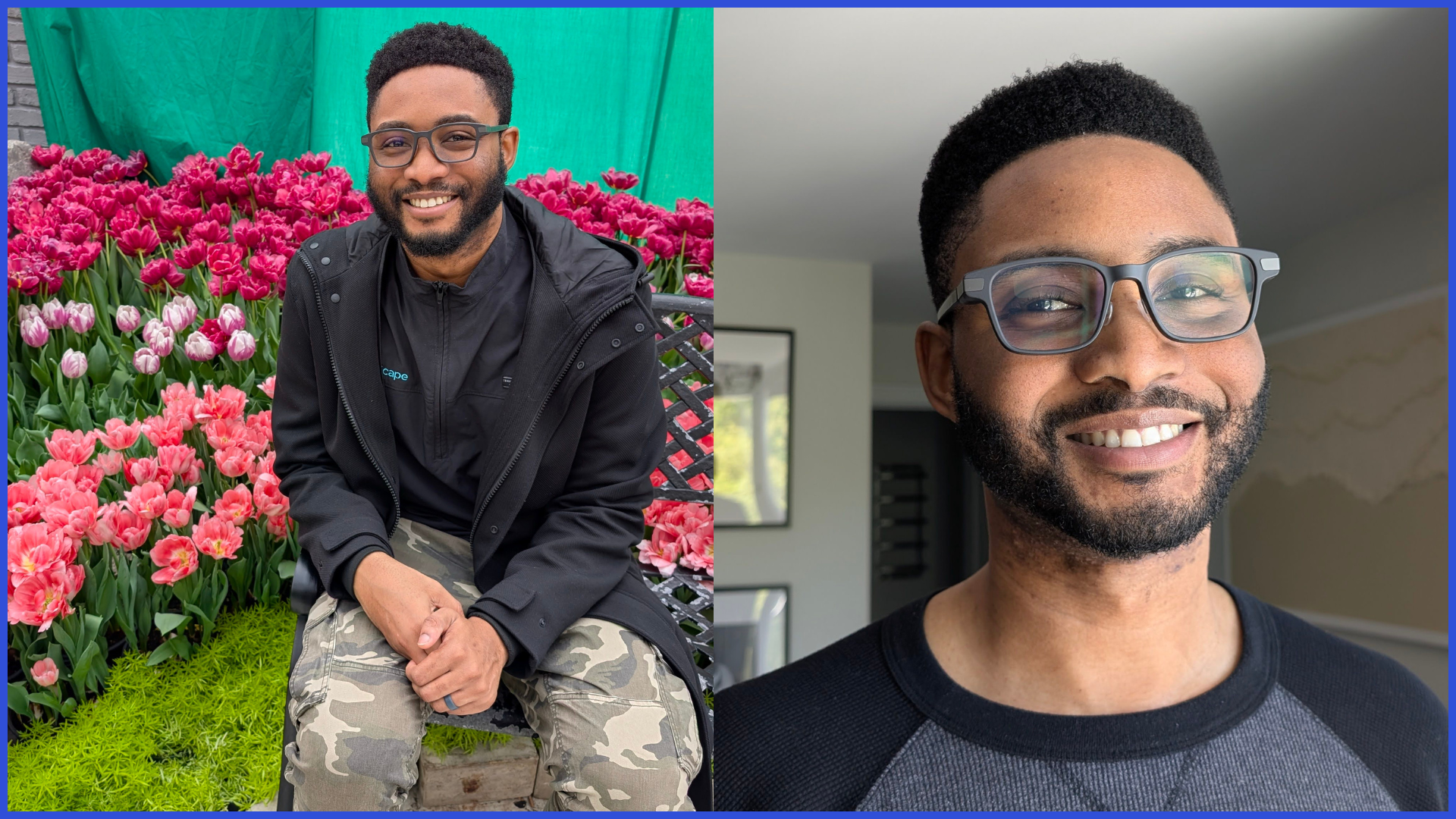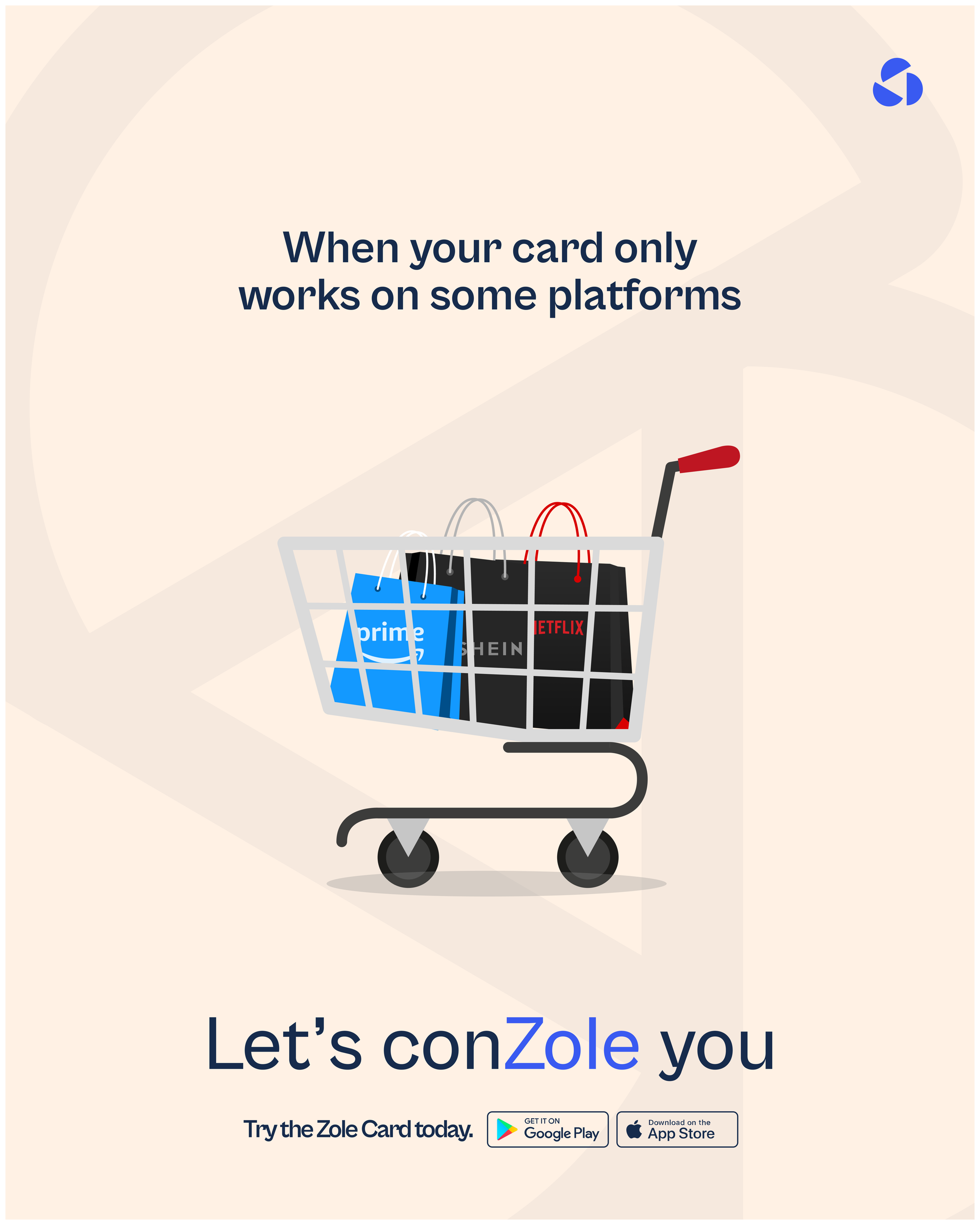The Software Engineer Who Dreams in Code—And Uses AI to Build a VR Driving School

From a failed VR startup that taught him hard lessons about timing and market readiness, to using AI tools that make him question whether he'll even need to write code in the future, Nem's journey reveals what happens when childhood curiosity meets adult resilience.
Nem Ekpunobi's wife has become accustomed to a peculiar nighttime routine: her husband talking in his sleep about work, solving coding problems while unconscious, muttering about algorithms and system architectures in the darkness.
"She'll wake me up and be like, 'You were asleep talking about work and solving some code,'" Nem laughs. "That's news to me, but I guess that's what happens when you live and breathe software development."
Today, Nem is a software engineer and team lead who barely writes code anymore, because AI handles most of the technical implementation. Instead, he spends his time architecting solutions, managing an engineering team, and building a VR driving simulator business called driVR Academy, which aims to help nervous drivers gain confidence without the consequences of real-world mistakes.
But getting here required surviving a spectacular startup failure, seven years of avoiding programming after a traumatic first encounter with C++, a detour through tech sales that made him question his life choices, and the humbling realization that timing matters as much as innovation when building products people actually want.
What You'll Discover in Nem's Journey:
- How childhood cartoons like Dexter's Lab shaped his engineering ambitions
- The reverse culture shock that hit him when his family moved back to Nigeria
- Why his first programming experience with C++ scared him away from coding for seven years
- The VR startup he launched in 2013 that failed despite being technically impressive
- How staring at his ceiling one morning made him realize he'd "strayed so far from his path"
- The moment he told his instructor exactly what he wanted to build before classes even started
- Why he barely writes code anymore and whether AI will eliminate his job entirely
- How he's using motion simulation and VR to solve driving anxiety
- The brutal honesty about why most people underestimate what it takes to build something great
- His framework for balancing a demanding full-time role with ambitious side projects

💡When Dexter's Lab Becomes Your Career Blueprint
"I grew up watching shows like 'Honey, I Shrunk the Kids', there was this wacky inventor guy who got his family into predicaments because of his inventions," Nem recalls. "I was completely smitten with the idea of inventing things, using creativity to build stuff that provides value or just does something cool."
But the cartoon that really captured his imagination was "Dexter's Laboratory" on Cartoon Network—the story of a boy genius with a secret lab hidden in his parents' house.
"I related so much with Dexter. I wished I had a secret lab in my parents' house too," he says. "Eventually I learned that what this character did was called engineering, so I got on the science track and started working toward that."
The problem was that real-world engineering education would prove far more complex and discouraging than cartoon laboratories suggested.
His family moved frequently during his childhood (between the UK and Canada), giving him exposure to different educational systems and approaches to technology. In both countries, computer labs were standard, students learned keyboarding and basic operating systems, and households generally had computers with internet access.
"I was sort of brought up with computers just around me. My parents had them, and I would always tinker. They'd give me old laptops from relatives and I'd learn my own way through Windows 95, 98, ME, 2000,... very early days compared to where we are now."
But his earliest vision of his future involved building physical things, not software. Hardware engineering seemed like the obvious path until his family made a decision that would completely reshape his perspective on education and what it meant to learn.

🌍The Nigeria Reality Check That Changed Everything
In his final two years of secondary school, Nem's family moved back to Nigeria, settling in Abuja. For someone raised in Canadian and UK educational systems, the transition was jarring in ways he hadn't anticipated.
"I experienced reverse culture shock, which was kind of crazy," he reflects. "School was very different than what I expected because the teaching styles were vastly different, and even the content you covered was different."
The academic approach felt fundamentally backwards to him.
"The schools I attended in Nigeria seemed more focused on theory and rules rather than application of concepts. You wouldn't really understand why you were doing something. In mathematics, for example, they'd teach you the quotient rule and product rule, but they wouldn't teach you why these rules exist, how you get to them, or how you can use graphing to visualize the functions you're trying to produce."
"We had a computer science course with no computers involved—just learning binary and doing tables manually," he remembers. "It felt completely disconnected from practical application."
But the social dynamics were even more challenging than the academic ones.
"I noticed these hierarchies seemed to exist in school among students. The whole concept of seniors telling juniors to do their laundry, taxing their food, all these really crazy concepts to me when I was in boarding school. I'd never imagined this kind of thing happening."
Coming from educational systems that emphasized equality and mutual respect, the senior-junior dynamics felt like regression.
"In my mind, it almost felt like devolving into savagery. I was like, 'I don't understand how people can treat each other this way. Just because someone did it to you, you feel like you have to pass this on to your junior?' I refused to engage in that sort of behavior."
Unfortunately, that decision had social consequences.
"Some juniors started looking at me like maybe I was weak, or they'd try to take advantage because they knew I wasn't going to come after them. It was like, 'I don't need to play these politics, man.'"
After completing secondary school in Nigeria, he applied to return to Canada for engineering school. Getting accepted felt like validation that his path was back on track.
He had no idea that university would present him with an even more demoralizing challenge.
😔The C++ Trauma That Lasted Seven Years
University represented a return to the learning environment Nem preferred—practical application, conceptual understanding, and systems thinking. But his first encounter with programming nearly ended his interest in software development before it began.
"My first exposure to programming was in university. In my first year, they made us learn C++, which is a very difficult language to start with as your first. It's pretty low-level, and it scared me. It scared me off programming for the next seven years."
"I didn't have a clear vision of what I would be using the code for. It felt abstract and disconnected from the building and inventing I actually wanted to do."
Rather than pushing through the frustration, Nem made a strategic pivot that many engineering students consider: he switched into business, drawn by entrepreneurship and the possibility of building companies rather than just technical systems.
"I realized I had a knack for entrepreneurship and business, so I switched programs and tried to run a startup—a VR startup."
This decision would lead to both his most educational failure and the discovery of what would become his life's work.
The 2013 VR Vision:
"This was around 2013, and my passion for immersive technologies really took off. The year prior, 2012, was very special in the VR world. Palmer Luckey founded Oculus and proved we could have quality virtual reality experiences at relatively affordable cost."
For the first time since those childhood cartoon laboratories, Nem could see exactly how technology might enable the kind of creative building he'd always imagined.
"It was no longer the extremely janky, low refresh rate VR from the 90s and early 2000s. Now it was actually possible to convince someone they were inside a digital space."
He had found his mission: combining his passion for education with immersive technology to create learning experiences that were fundamentally more engaging than traditional online education.
"I always had a passion for teaching, and I thought maybe we could use VR to create educational modules. Instead of people going online to answer questionnaires and read through slides, how about we build immersive experiences that teach specific subjects?"
The concept was ambitious and clear.
"If it's healthcare education, easy enough—model the heart, model the body, take them inside. The idea was basically Magic School Bus brought to life. What Miss Frizzle did for kids, we could do for early education more broadly."
He had vision, passion, and timing—Palmer Luckey had just proven the technology was viable. What could go wrong?

📉The $50,000 Lesson in Market Timing and Bureaucracy
Nem's VR education startup had everything that startup advisors recommend: a clear problem to solve, innovative technology, passionate founders, and a large addressable market. It failed anyway, teaching him lessons about market readiness and institutional adoption that no business school curriculum could provide.
"I tried running my hand at that VR education platform, but it was fairly early. The hardware wasn't quite where it should be—difficult for many people to adopt, motion sickness was still a significant issue."
The technical challenges were solvable given time and iteration. The institutional barriers were not.
"It was incredibly difficult to break into the bureaucracy of education systems. School boards often have five to ten-year contracts, and for an unproven technology like VR, especially back then, it was nearly impossible to convince them to take a bet on the platform."
This wasn't just a sales challenge, it was a fundamental mismatch between startup timelines and institutional decision-making processes.
"We were asking schools to adopt cutting-edge technology when their procurement cycles and risk tolerance were built for established, proven solutions. Even if our product was technically superior, the timing was wrong."
The failure was comprehensive and expensive, but the education was invaluable.
"I learned my lessons," Nem reflects, without elaborating on the specific financial or emotional costs. But the impact was clear: he graduated and took a job in tech sales about as far from building immersive educational experiences as he could get while remaining in the technology sector.
The Sales Years:
"I did software sales specifically for a couple of years. And then one day I woke up and just stared at my ceiling. I was like, 'Oh man, I've strayed so far from my intended path. How did I end up here? I'm supposed to be building things.'"
That ceiling-staring moment represents something many professionals and creatives experience but few act upon: the recognition that career security and career fulfillment aren't the same thing, and that sometimes you need to make risky decisions to realign with your actual objectives.
"At that point I decided to reevaluate my life. I chatted with my parents and they were like, 'Yeah, you've always been technical. You should go back to school and do this IT thing.' I was like, 'I don't really want to do IT, but software development is up and coming and it allows me to build things. I can probably build things faster through code than through hardware.'"
This time, his approach to programming education would be completely different.
🔁The Second Chance That Changed Everything
When Nem returned to school for software development, he wasn't the confused engineering student who'd been traumatized by C++. He was someone with clear vision, startup experience, and specific goals for what he wanted to build.
"This time I saw exactly what I would be using the code for. I had a very clear vision that I wanted to pick up programming skills so I could build spatial computing experiences in the future."
The difference in approach was immediately apparent to his instructors.
"I came into school and told my instructor before I even started: 'This is what I want to do, and whatever it takes to get there is whatever it takes.'"
Having purpose transformed the learning experience entirely.
"I found that I just loved it. I couldn't get enough. I would come in and stay until I was literally kicked out of campus by custodians. I couldn't get away from the work."
"Thankfully it was a relatively fast program, just a couple of years. But during that time, I discovered that software development allows you to build what you want at a pretty large scale. There are so many ways to invent and innovate, and software enables you to do it with just a computer. You don't need expensive hardware or complex tooling—it's just you, your thoughts, and the keyboard in front of you."
After graduation, he entered the job market as a software engineer, but he hadn't forgotten the lessons from his failed VR startup. This time, his approach to building products would be more measured, more systematic, and more focused on solving problems he understood intimately.

🤖When AI Makes You Question Your Own Job Security
As a software engineer in 2025, Nem finds himself in the peculiar position of being highly productive while writing almost no code—a transformation that both excites and concerns him about the future of his profession.
"Day to day, I use AI in my professional work and it speeds me up significantly. At this point, I barely write code anymore because I'm just prompting AI. I'm saying, 'This is the sub-problem I'm trying to solve,' and then we go through it step by step."
His role has evolved from implementation to oversight and architecture.
"All I'm doing is reviewing the code, looking at it and thinking, 'Okay, yeah, that makes sense,' or questioning why the AI chose a particular approach. Then it explains its reasoning, and I can either accept that or push back and course correct."
This shift represents a fundamental change in what software engineering work actually involves.
"I'm able to work at higher and higher levels of abstraction every time. I can tackle larger problems, break them down, and then have AI agents go out and solve each piece instead of me having to think through the detailed breakdown myself."
But this productivity gain comes with existential questions about professional longevity.
"I start to wonder: at what point will I no longer need to be in the picture as a supervisor? It could be next year, could be a couple of years from now, could be ten years, but everything points to sooner rather than later."
Rather than denying this possibility or retreating from AI tools, Nem has made strategic career adjustments.
"What I've realized is that dealing with people is a more crucial skill. Recently I got a promotion into a team lead, engineering manager type of role. Managing groups of engineers to be more effective with our resources—that's where the human element remains essential."
The Double-Edged Opportunity:
"For me as a founder, AI is very exciting because it gives me more opportunity to leverage all this technological power to build up my business. Whenever my full-time employment ends—and who knows when that will be—it doesn't really matter because AI enables individuals to achieve enterprise-scale results."
This perspective—embracing AI as a capability multiplier rather than fearing it as job competition—informs both his professional development and his approach to building driVR Academy.
Nem at the 11th Edition of MakerFest showcasing driVR
🎮Building Confidence Without Consequence
driVR Academy represents Nem's systematic approach to product development, incorporating lessons from his failed VR startup while leveraging current technology capabilities and market readiness.
The core insight comes from observing a specific problem in Canada's graduated licensing system.
"We have a lot of people who struggle with the in-car portion of driver testing, especially passing the G2 test. It's not because they don't understand driving theory—they've passed the written exam. It's because they have anxiety, they feel nervous behind the wheel, understanding the gravity and weight of piloting a massive machine."
Rather than building a comprehensive solution immediately, Nem has taken a validation-first approach.
"For three years now, I've been going to MakerFest, where community creators showcase their projects. Each year I demonstrate the system and iterate based on real user feedback. I gather data points, refine the system over the next year, then return with improvements."
The technical implementation combines software and hardware in ways that would have been prohibitively expensive during his 2013 startup attempt.
"It's a combination of motion simulation, VR, haptic feedback - you sit in a chair on the motion rig, you have pedals that give feedback when you press them, a steering wheel, shifter, everything you need. For all intents and purposes, you are in a car, but it's a virtual environment where there's no risk from mistakes."
The Scalability Focus:
"The goal isn't to build the highest fidelity experience possible, but high enough fidelity at a reasonable cost so it can become scalable. If you just go for the absolute best, you can build one unit. But how do you scale that?"
This represents a crucial evolution from his earlier startup approach—prioritizing market viability alongside technical excellence.
"The tech keeps getting better, which benefits me because I can adopt whatever offers the best value. Now we're at a point where I can actually offer lessons to people, charge a nominal fee, and get real customer feedback from paying customers. That data will help shape the system even more."
The progression from prototype to product reflects years of systematic validation rather than assuming product-market fit.
The Reality of Balancing Full-Time Work and Ambitious Side Projects
When people hear about driVR Academy's combination of hardware and software development, motion simulation, and VR integration, the natural question is: how does someone build this while maintaining a demanding full-time engineering role?
Nem's approach is more systematic than heroic.
"I'm grateful to be in a blessed position where my full-time job is remote and flexible. When all you have to do is develop software, it's easy to work from home. But my side project isn't something I dedicate every single day to—it's weekends here and there, specific events I can participate in."
Rather than trying to maintain constant progress, he focuses on high-impact activities that move the project forward meaningfully.
"Events like MakerFest give me concentrated user feedback that I can spend months implementing. It's not about working on this every evening after my day job. It's about strategic bursts of activity that compound over time."
The slow progression is intentional rather than a limitation.
"This is something I've been working on over years. It's a slow progression, and that's actually beneficial because the underlying technology keeps improving, costs keep coming down, and I can adopt better solutions as they become available."
The Team Structure:
"My team consists of myself and my wife right now. She's a nurse, but she helps with setup and admin stuff, keeps me on track. It's good to have her support, but since it's a small project, it doesn't require a large team yet."
This lean approach reflects lessons learned from his earlier startup experience about premature scaling and resource allocation.
"Once I get some traction and demonstrated demand, then my goal is to approach investors and say, 'I have this thing, people are paying for it, I'd like to scale it. This is where you come in and here's how we can all grow and make money together.'"
The sequence—validate demand first, then seek investment for scaling—represents a more mature approach to startup building than his earlier attempt.

⏰The Brutal Honesty About Building Things People Want
When asked for advice about starting side projects while maintaining full-time work, Nem's response reflects hard-earned wisdom about the realities of product development.
"It's a cliche, but just start. If you wait for a specific time, you're not going to learn the lessons you need to know by then. Start now so you can begin failing quickly and understanding what it actually takes to build something great that people will use and find value in."
This isn't motivational speak—it's recognition that most people fundamentally underestimate the complexity of creating valuable products.
"Everyone underestimates what it takes to actually build something great. If your goal is to provide genuine value, there are going to be growing pains because nothing worthwhile is easy. Otherwise everyone would just do it naturally, right?"
The Market Reality:
"Low-hanging fruit is low-hanging fruit, and people will crowd those markets quickly. But if there's something that's a genuine issue—especially something you're experiencing yourself—and you can't find adequate solutions, and you know you have the capability to make something better, just start making it."
He emphasizes the importance of personal connection to the problem you're solving.
"If it takes you years to build, that's fine. At least you'll learn what it actually takes to bring something to life, and you can apply those skills to the next thing. There are infinite problems that exist on this planet (and beyond), and we're capable of solving them."
The Uniqueness Factor:
"You have to realize that only your brain functions the way it does and makes the connections it's made through all the experiences it's received. Only you can bring this unique perspective to a solution. That unique approach is valuable by definition—there must be someone else who can benefit from that specific way of thinking about the problem."
This philosophy—that individual perspective and experience create inherent value—underlies both his approach to product development and his belief that human creativity will remain essential even as AI capabilities expand.
💼What Happens When You Finally Align Passion and Profession
Nem's journey from cartoon-inspired childhood dreams through startup failure, career detours, and back to building immersive experiences represents more than individual professional development—it illustrates how persistence, strategic thinking, and willingness to learn from failure can eventually create alignment between what you love doing and what you're capable of building.
The technical skills, business experience, and market understanding he's accumulated through various roles now combine in ways that wouldn't have been possible earlier in his career.
"I love software development because it allows me to build what I want at scale. You can invent and innovate, and all it takes is a computer. You don't need expensive hardware or complex tooling—just your thoughts and the keyboard in front of you."
But the real satisfaction comes from applying these capabilities to problems he understands intimately.
"driVR Academy combines everything I've learned about VR, software development, user experience, market validation, and gradual scaling. It's the intersection of all my interests and skills applied to a problem I've observed firsthand."
The progression from dreaming in code to using AI for implementation to focusing on team leadership and product strategy reflects natural career evolution in a rapidly changing technological landscape.
The Long-Term Vision:
"Whether my full-time employment continues indefinitely or ends next year doesn't really matter to me because AI gives individuals the ability to achieve enterprise-scale results. That creates opportunities for building businesses that wouldn't have been possible before."
Rather than viewing technological change as threatening job security, Nem sees it as expanding the scope of what individuals can accomplish—making ambitious projects more feasible while human judgment and creativity become more valuable, not less.
From that kid watching Dexter's Lab and wishing for a secret laboratory to an adult who dreams in code while building VR systems that solve real problems, his story demonstrates what becomes possible when childhood curiosity survives long enough to acquire adult capabilities.
His advice to others isn't to follow his specific path, but to recognize that everyone's unique combination of experiences creates distinctive value that only they can provide.
"Everyone is unique and everyone can be valuable because of that uniqueness. The key is just starting, even if you don't know exactly where it will lead."
Building innovative products across borders requires more than technical skills—it demands the right financial tools. Just like Nem leverages AI to scale his work, Zole gives Canadian-based entrepreneurs, creators, and professionals the ability to move money between Canada and Nigeria without friction—fast, reliable, and at the best rates. Whether you’re funding a project, supporting family, or managing cross-border opportunities, Zole helps you focus on building while we handle the money side.
Download the Zole app today and experience seamless international payments.



Comments ()